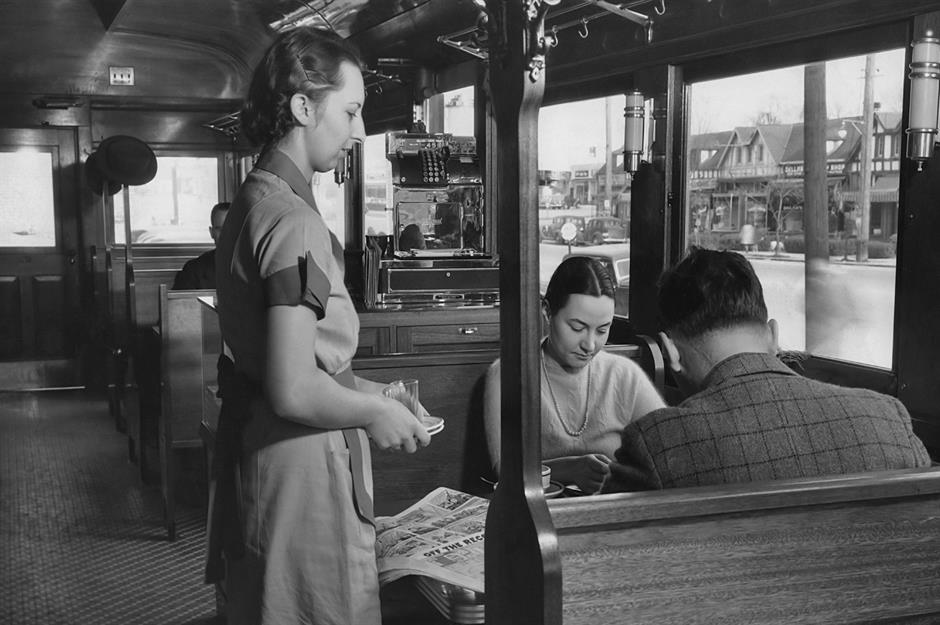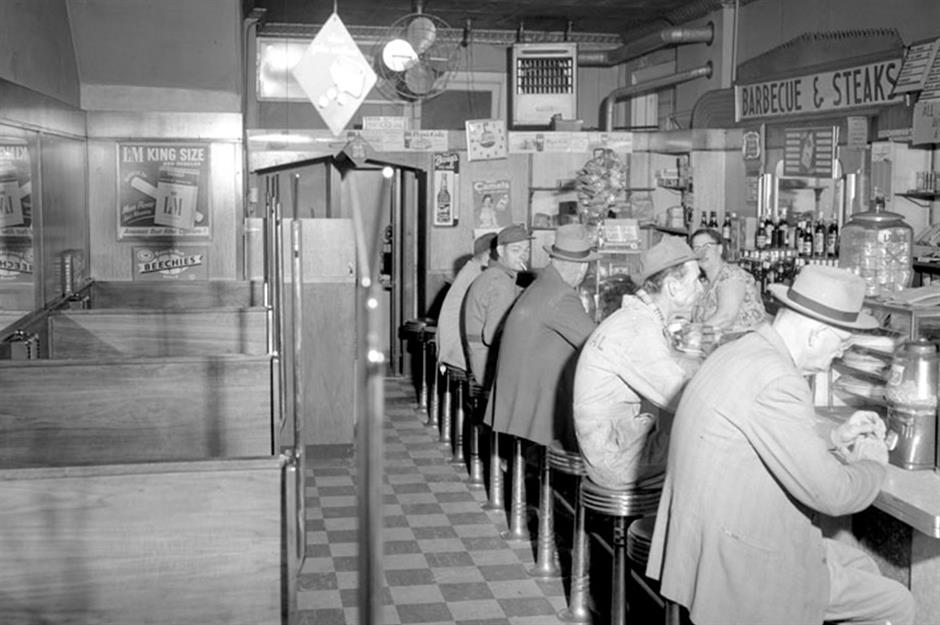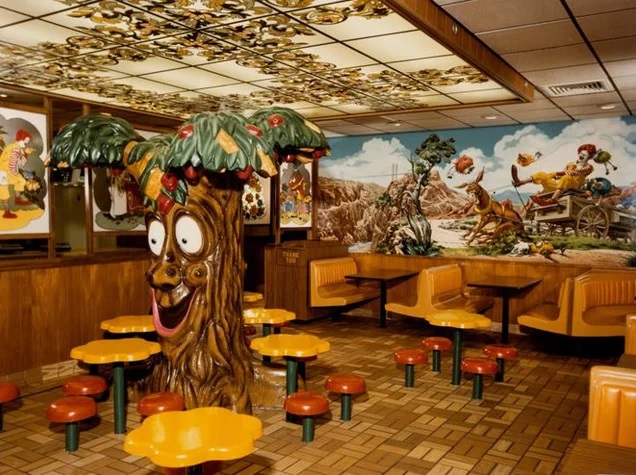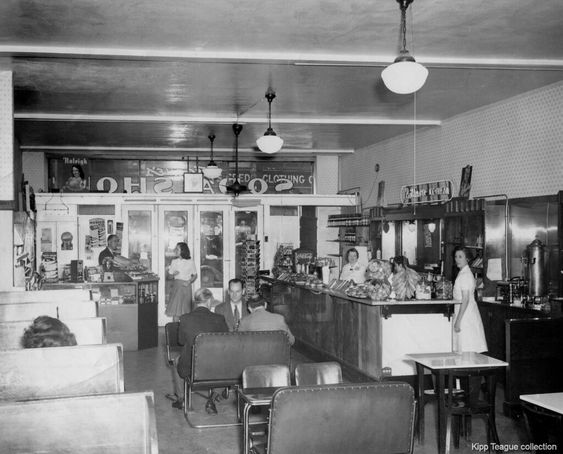The Evolution of Restaurant Booths: How They Became a Staple in Dining
When was the restaurant booth invented?
 1950's Diner. H. Armstrong Roberts Classic Stock / Getty Images
1950's Diner. H. Armstrong Roberts Classic Stock / Getty Images
Restaurant booths are a common sight in many eating establishments around the world. They provide a comfortable, private space for diners to enjoy their meals and conversations. However, the history of restaurant booths is a relatively recent one, with their origins dating back to the early 20th century.
The first restaurant booths were introduced in the United States in the early 1900s. At the time, restaurants were primarily designed for quick service and turnover, with little attention paid to the comfort of the diners. Customers were often seated on stools or chairs at long tables, with no privacy or personal space.
In the 1920s and 1930s, restaurant owners began to experiment with new designs that would provide a more comfortable dining experience. They started to add booths to their restaurants, which offered a more intimate setting for customers to enjoy their meals. The booths were typically made from wood or metal and were designed to seat two or three people.
The popularity of restaurant booths continued to grow in the 1940s and 1950s, as the post-war era brought about an increase in disposable income and dining out became a more common social activity. Booths were often incorporated into the design of diners and drive-ins, where they offered a convenient and cozy place for customers to enjoy their food.
What Restaurant first use Restaurant Booths?

1930's Keyston View Company Archive Photos / Getty Image
It is not entirely clear which was the first restaurant to use booth seating, as the use of booths in restaurants gradually evolved over time. However, it is believed that the first restaurant to popularize booth seating was the Tad's Steaks chain, which opened its first location in New York City in 1957.
Tad's Steaks offered a unique dining experience, with affordable prices and a cozy, intimate atmosphere created by the use of booth seating. The restaurant quickly became popular, and the concept of booth seating was soon adopted by other fast food chains, diners, and restaurants around the country.
In the 1960s and 1970s, restaurant booths became even more ubiquitous, as fast food chains like McDonald's and Burger King began incorporating them into their restaurants. This allowed them to serve more customers in less space, as the booths provided a more efficient use of floor space than traditional tables and chairs.
Where was the Restaurant Booth first used?

1950's Road Side Diner in Virginia. The Library of Virginia FLCKR CCO
The use of restaurant booths is primarily associated with the United States, where they were first introduced in the early 1900s. While other countries may have had similar seating arrangements, the popularity and widespread use of restaurant booths in the United States helped to establish them as a staple of the American dining experience.
That being said, the concept of using private seating areas for dining has been around for centuries in various cultures around the world. For example, traditional Japanese restaurants often feature private dining rooms or booths, known as "zashiki", which are separated from the main dining area by sliding doors or curtains. These private seating areas allow for more intimate and personalized dining experiences, and have been in use in Japan for centuries.
Similarly, many Middle Eastern cultures have long used private dining areas known as "majlis" for formal gatherings and dining. These areas are often separated from the main living space by curtains or dividers and provide a more intimate and private dining experience.
So while the use of restaurant booths as we know them today may have originated in the United States, the concept of private dining areas has been present in various forms throughout history and in different cultures around the world.
 1970-80's McDonalds Diner with Booths
1970-80's McDonalds Diner with Booths
Today, restaurant booths are a staple of the dining experience. They come in a variety of styles and materials, from traditional wood and metal to more modern designs made from plastic and foam. They can be found in a range of dining establishments, from fast food restaurants to high-end fine dining establishments.
In addition to their practical benefits, restaurant booths also offer a number of aesthetic benefits. They can be used to create a cozy, intimate atmosphere, or to add a touch of retro nostalgia to a diner or drive-in. They can also be used to create a more visually appealing dining space, as they can be customized with a range of fabrics and materials to match the overall décor of the restaurant.
What manufacturer was the first to Advertise and produce Restaurant Booths?
It's difficult to determine which manufacturer was the first to advertise restaurant booths, as the use of booths in restaurants evolved gradually over time. However, some of the earliest and most prominent manufacturers of restaurant booths in the United States include companies like Craddock Furniture, Arden Companies, and American Seating.
What Restaurant Booth is considered Historical?
 Al Capone's Booth from The Green Mill in Chicago
Al Capone's Booth from The Green Mill in Chicago
One interesting piece of history related to restaurant booths is Al Capone's booth. Al Capone was a notorious gangster in the early 20th century who was known to frequent a restaurant called The Green Mill Gardens Cocktail Lounge in Chicago. The Green Mill had a distinctive horseshoe-shaped booth that was located in a discreet corner of the restaurant, providing Capone with a private and unobstructed view of the entire establishment. This booth is still in use today and is known as "Al Capone's Booth."
In conclusion, the history of restaurant booths is a relatively short one, dating back to the early 20th century. However, their impact on the dining industry has been significant, as they have helped to create a more comfortable and intimate dining experience for customers. Today, restaurant booths are an essential part of the dining landscape, and they continue to evolve and adapt to meet the changing needs of diners and restaurant owners alike.
 Teague's Soda Shop 1945
Teague's Soda Shop 1945
